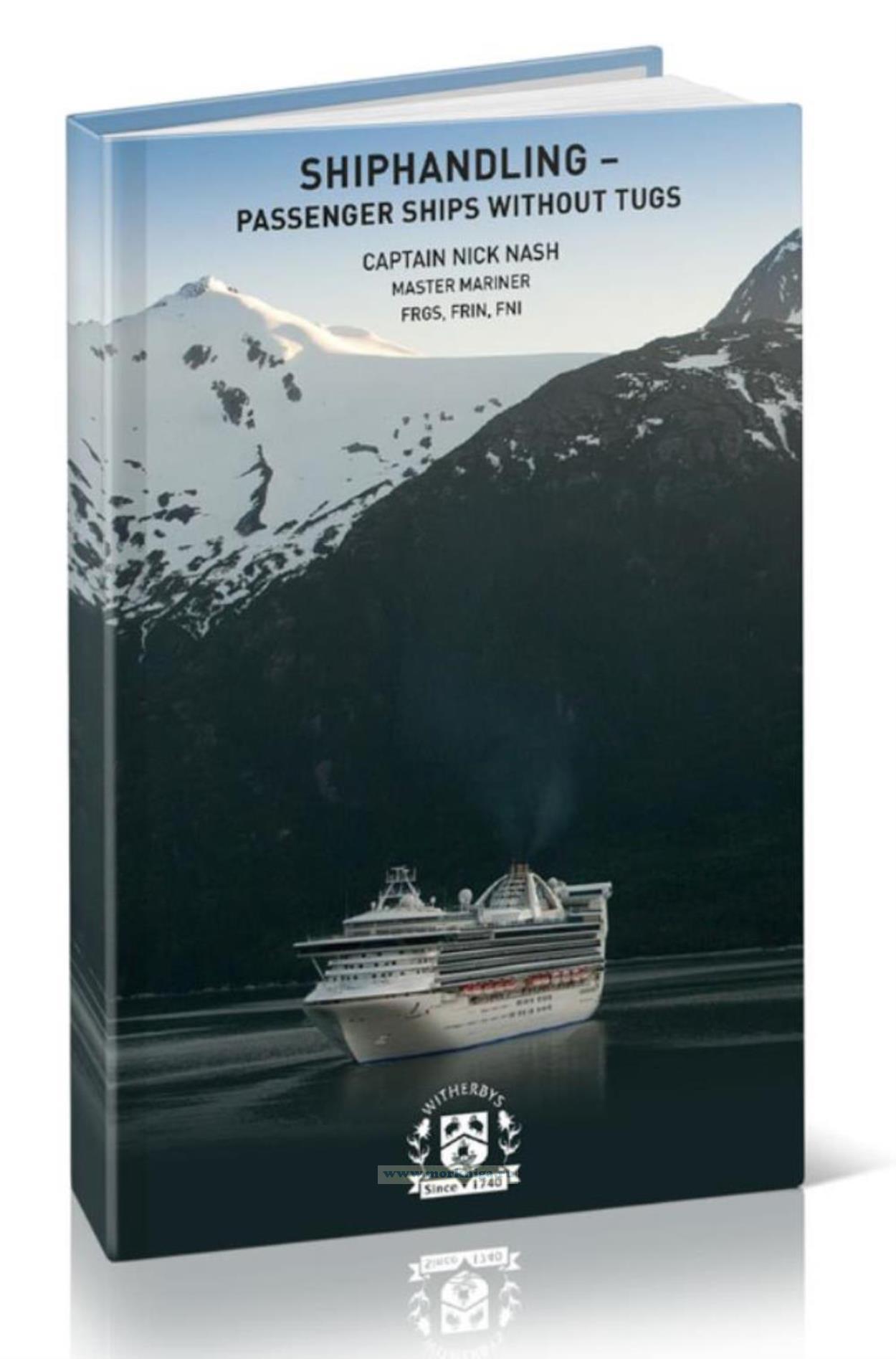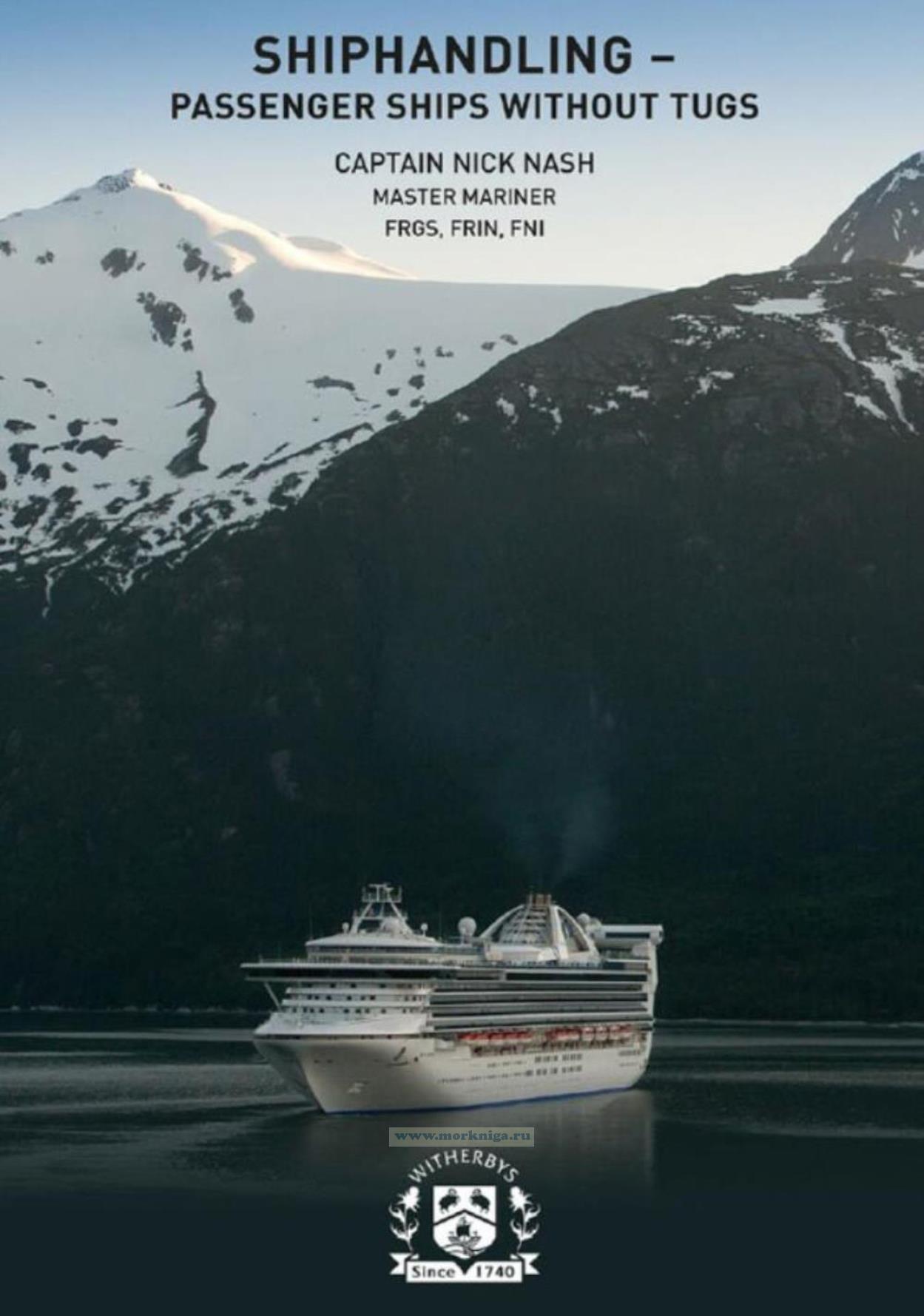Сб с 10 до 16
Shiphandling - Passenger Ships Without Tugs/Управление Судами - Пассажирские суда без буксиров
Издание на английском языке
Captain Nick Nash has written a much needed practical and informative book on how to manoeuvre large modern passenger vessels and ferries that have multi-engines, nidders and thrusters. He has also included a chapter on handling ships with POD propulsion.
Contents
Foreword
Bibliography and Thanks Authors Note About the Author
1. The pivot point
1.1 Locating the Pivot Point
1.1.1 Thruster action
1.1.2 Rudders
1.1.3 Effect of drift
1.1.4 Anchors
1.1.5 Shallow water
1.1.6 Wind
1.1.7 Hull form
1.2 How to Find the Pivot Point - In Practice
1.2.1 Pivot point and torque
1.3 Pivot Point in Action
1.4 Pivot Point Zone
2. Propellers, rudders and thrusters
2.1 Transverse Thrust
2.2 Propeller Torque
2.2.1 Outward turning propellers
2.2.2 Inward turning propellers
2.3 Rudder Force
2.3.1 Two case studies on rudder force
2.3.2 Lateral rudder force
2.4 Thrusters
2.4.1 Thruster transition
2.4.2 Thruster pull
2.4.3 Thruster fade
3. Podded propulsion systems
3.1 A Brief Summary of Azipod Development
4. Bernoulli's principle
4.1 Squat
4.1.1 Effects/indications of squat
4.1.2 Squat - practical notes
4.2 Rank Effect
4.2.1 Simulator exercise showing bank effect
4.3 Navigation in Narrow Channels
4.3.1 The blockage factor
4.3.2 Blockage factor and drift angle
4.3.3 Water flow and pressure zones
4.3.4 Interaction between ships
4.3.5 Meeting in a narrow channel
4.4 The Rudder
4.4.1 Centre of pressure
4.4.2 The rudder stall
4.4.3 High lift rudders
4.4.4 Rudder block
4.5 Altering Course on High-Sided Vessels
5. Rate of turn
5.1 Constant Rudder vs Constant Radius Turn
5.2 Monitoring the Constant Radius Turn
5.3 Summary
6. Practical use of a radius track control system
7. Wind and current
7.1 Wind Loads on Cruise Vessels
7.2 How to Construct a Ship’s Wind Chart
7.2.1 Model test wind force measurements information
7.3 How Does Wind Act on a Stationary Ship in Practice?
7.3.1 What happens next?
7.3.2 Making headway - beam wind
7.3.3 Making sternway - beam wind
7.3.4 Leeway - ship stopped
7.3.5 Estimation of leeway
7.4 Crabbing
7.5 Wind Measurement
7.6 Current Forces
7.7 Wind Statistics Log
7.8 Summary
8. Stopping and emergency anchoring as a brake
8.1 Manoeuvring Stopping
8.2 Controlled Slow Down
8.3 Crash Stop
8.4 Alternative Stopping Ideas
8.5 Rudder Cycling
8.6 Emergency Anchoring
8.7 Looking at the Forces Involved and a Different Approach
8.7.1 Method
8.7.2 Effect of engine speed change in a turn
9. Basic handling
9.1 The 7 Approach
9.2 The 50 m and 10 Liit Ott Angle
9.3 A Long Run In
9.4 Backing into the Berth
9.5 The 100 m Lift Off
9.6 The‘U’Turn Approach
9.7 The Finger Pier
9.7.1 Watch the bow
9.7.2 Lifting without a tug
9.8 Ship’s Tender
9.9 Push and Drive
9.10 Head Up Display
9.11 Transfer Distance
9.12 Control Checks
9.13 The Overshoot, Backup and Diop Anchoring Method
9.14 Undocking in a Strong Current
10. The up and down side of the drift angle
10.1 Conning Position in Relation to the Centreline
10.2 Estimation of Drift Angle
10.3 The Full Drift Angle Excel Spreadsheet
10.4 In Practice
Appendices
Appendix A - Example Port Manoeuvring Plans
Barbados arrival
Barbados departure (1)
Barbados departure (2)
Belfast arrival
Dublin arrival
Dublin departure (1)
Dublin departure (2)
Dublin arrival (back in)
Gibraltar arrival
Gibraltar departure
Gibraltar arrival (inner berth, North Mole)
Gothenburg arrival
Gothenburg departure
Greenock arrival
Juneau arrival
Juneau departure
Le Havre arrival
Le Havre departure (1)
Le Havre departure (2)
Liverpool arrival
Livorno, Italy, arrival
Mahogany Bay, Koatan, arrival
Mahogany Bay departure
Marseille arrival
Marseille departure
Monte Carlo arrival
Montego Bay arrival
Montego Bay departure
Mykonos arrival
Naples arrival
Nawiliwili, Hawaii, arrival
Nawiliwili, Hawaii, departure
Piraeus arrival (inside berth)
Piraeus departure (inside berth)
Piiaeus anival (uulei beilli)
Piraeus departure (outer berth)
Ponta Delgada, Azores, arrival
Port Everglades arrival (pier 2, PST)
Port Everglades arrival (pier 2, SST)
Port Everglades departure (pier 2, PST)
San Francisco arrival (flood tide)
San Francisco arrival (ebb tide)
San Francisco departure (ebb current)
San Juan arrival
San Juan departure
San Pedro arrival
San Pedro departure
South Queensferry, Scotland, anchorage
Southampton arrival
Southampton departure
St John’s, New Brunswick, departure
St Peter Port, Guernsey, anchorage
St Thomas, US Virgin Islands, arrival
St Thomas, US Virgin Islands, departure
Tortola, British Virgin Islands, arrival
Tortola, British Virgin Islands, departure
Valletta, Malta, arrival
Valletta, Malta, departure
Vancouver arrival
Zeebrugge, Belgium, arrival
Appendix В - 'Planning and Control of Turns' - Captain Hans Hederstrom, FNI and Captain Benny Pettersson, FNI (and Captain Sven Gylden, MNI) (reproduced with their kind permission)
Appendix С - Useful Shiphandling and other Formulas

